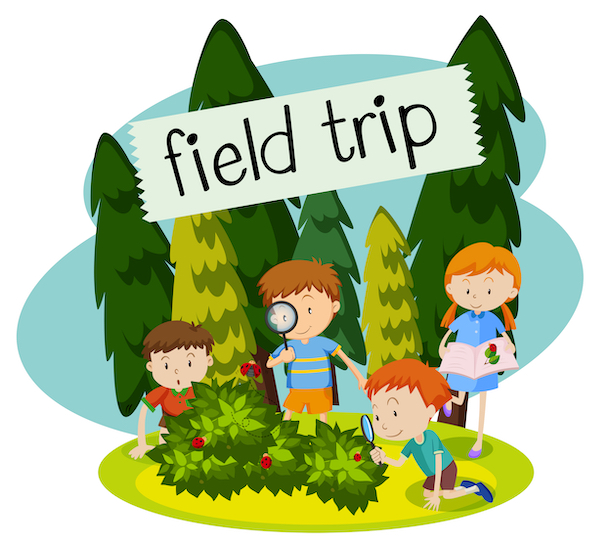How to Implement Deschooling in Your Home?

What is Deschooling?
Deschooling is a process of transitioning from a traditional school setting to a more self-directed, learner-centered approach to education. It involves breaking away from the traditional school model and allowing learners to explore their interests and passions.
Deschooling is often seen as a bridge between traditional schooling and unschooling, and can be a great way to start the transition to a more self-directed approach to learning.
Deschooling focuses on allowing learners to take control of their own learning and explore their interests in a way that is meaningful to them. It encourages learners to pursue their own goals and develop their skills through real-world experiences and hands-on activities.
Deschooling also encourages learners to take responsibility for their own learning and foster a sense of self-direction and independence.
Deschooling can be beneficial for learners of all ages, as it allows them to explore their interests and develop their skills in a way that is meaningful to them. It can also be beneficial for parents, as it allows them to provide resources and support to help their children pursue their interests.
Deschooling can also be beneficial for educators, as it allows them to create a learning environment that is free from external pressures and expectations.In conclusion, deschooling is a great way to transition from a traditional school setting to a more self-directed, learner-centered approach to education. It allows learners to take control of their own learning and explore their interests in a way that is meaningful to them. Deschooling can be beneficial for learners, parents, and educators alike, and can be a great way to start the transition to a more self-directed approach to learning.\
What are examples of Deschooling?
1. Taking a break from traditional schooling and allowing learners to explore their interests and passions.
2. Developing a personalized learning plan that is tailored to the individual needs of the learner.
3. Incorporating real-world experiences and hands-on activities into the learning process.
4. Allowing learners to take control of their learning and set their own goals.
5. Encouraging learners to take responsibility for their own learning.
6. Fostering a sense of self-direction and independence in learners.
7. Creating a learning environment that is free from external pressures and expectations.
What are the Curriculums for Deschooling?
1. Self-directed learning: Learners are encouraged to explore their interests and passions and develop their own learning plan.
2. Experiential learning: Learners are encouraged to explore the world around them and gain knowledge through real-world experiences.
3. Project-based learning: Learners are encouraged to pursue projects that are meaningful to them and develop their skills.
4. Inquiry-based learning: Learners are encouraged to ask questions and explore topics that are of interest to them.
5. Collaborative learning: Learners are encouraged to work together and share their knowledge and experiences.
6. Technology-based learning: Learners are encouraged to use technology to enhance their learning and explore new topics.
How do you Deschool your children?
1. Start by talking to your children about their interests and passions. Ask them what they would like to learn and explore.
2. Encourage your children to take control of their learning and set their own goals.
3. Allow your children to explore their interests and develop their skills through real-world experiences and hands-on activities.
4. Provide resources and support to help your children pursue their interests.
5. Foster a sense of self-direction and independence in your children.
6. Create a learning environment that is free from external pressures and expectations.
7. Celebrate your children’s successes and encourage them to keep learning.
Deschooling vs. Unschooling:
Deschooling and unschooling are two different approaches to education that have become increasingly popular in recent years. Both of these approaches have their own unique advantages and disadvantages, and it is important to understand the differences between them in order to decide which one is best for you and your family.
Deschooling is a process of transitioning from a traditional school setting to a more self-directed, learner-centered approach to education. It involves breaking away from the traditional school model and allowing learners to explore their interests and passions. Deschooling is often seen as a bridge between traditional schooling and unschooling, and can be a great way to start the transition to a more self-directed approach to learning.
Unschooling, on the other hand, is a form of self-directed learning that does not involve any structured curriculum or lessons. Unschoolers believe that learning should be driven by the learner’s interests and passions, and that traditional schooling is unnecessary. Unschoolers often rely on real-world experiences and hands-on activities to learn.
Unschooling can be a great way to allow learners to explore their interests and develop their skills in a way that is meaningful to them.When deciding between deschooling and unschooling, it is important to consider the individual needs and interests of the learner.
Deschooling can be a great way to transition to a more self-directed approach to learning, while unschooling can be a great way to allow learners to explore their interests and develop their skills in a way that is meaningful to them. Ultimately, the decision between deschooling and unschooling should be based on the individual needs and interests of the learner.
How Long Does Deschooling Take?
Deschooling is an individual process and can take anywhere from a few weeks to several months or even years, depending on the individual and the situation. It is important to remember that deschooling is not a one-time event, but rather an ongoing process that can take place over a long period of time.
Tips for Student Activities During Deschooling Period
1. Spend time exploring your interests: Take the time to explore your interests and find out what you are passionate about. This could include reading books, exploring hobbies, or taking classes in something that interests you.
2. Spend time with family and friends: Take the time to reconnect with family and friends. Spend time talking, playing games, or just being together.
3. Take time for yourself: Take the time to relax and do something for yourself. This could include taking a walk, listening to music, or doing something creative.
4. Get involved in your community: Get involved in your community by volunteering, attending local events, or joining a club or organization.
5. Pursue educational opportunities: Take the time to pursue educational opportunities that interest you.
This could include taking online classes, attending workshops, or exploring educational resources.
How to Transition from Deschooling to Homeschooling?
Transitioning from deschooling to homeschooling can be a difficult process, but it is possible with the right preparation and support. Here are some tips for transitioning from deschooling to homeschooling:
1. Research homeschooling: Take the time to research homeschooling and learn more about the different methods and approaches.
2. Create a plan: Create a plan for your homeschooling journey. This could include setting goals, creating a curriculum, and developing a schedule.
3. Connect with other homeschoolers: Connect with other homeschoolers in your area or online. This can be a great way to get advice and support from experienced homeschoolers.
4. Find resources: Find resources such as books, websites, and online courses to help you in your homeschooling journey.
5. Get organized: Get organized by setting up a homeschool space and gathering the supplies you need.
6. Start homeschooling: Once you have done the research and created a plan, you can start homeschooling. Take it one step at a time and remember to be flexible.
Deschooling activity examples
Deschooling activities can be anything that helps an individual transition away from traditional schooling and into a more self-directed learning environment. Examples of deschooling activities include:
1. Exploring interests: Take the time to explore your interests and find out what you are passionate about. This could include reading books, exploring hobbies, or taking classes in something that interests you.
2. Connecting with family and friends: Take the time to reconnect with family and friends. Spend time talking, playing games, or just being together.
3. Taking time for yourself: Take the time to relax and do something for yourself. This could include taking a walk, listening to music, or doing something creative.
4. Getting involved in the community: Get involved in your community by volunteering, attending local events, or joining a club or organization.
5. Pursuing educational opportunities: Take the time to pursue educational opportunities that interest you. This could include taking online classes, attending workshops, or exploring educational resources.

